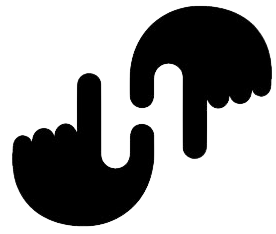What is a good sentence for alliteration?
“She sells seashells by the sea-shore.” Another fan-favorite is: “Peter Piper picked a peck of pickled peppers.” Alliteration is meant to be more than a tongue twister, though.
What are 5 examples of alliteration?
Alliteration Tongue TwistersPeter Piper picked a peck of pickled peppers. A good cook could cook as much cookies as a good cook who could cook cookies.Black bug bit a big black bear. Sheep should sleep in a shed.I saw a saw that could out saw any other saw I ever saw.
What is an alliteration in writing?
Alliteration is the repetition of the same letter sound across the start of several words in a line of text. The word comes from the Latin littera, meaning letter of the alphabet. The current definition of alliteration has been in use since the 1650s.
How can alliteration be improved?
Have students give a thumbs up if word pairs rhyme (e.g. “pan,” “man”) or if they are alliterative (e.g. “pan,” “pet”). Contrast with examples that do not match (e.g. “dish,” “man”), making sure to emphasize the ending or beginning sounds as much as possible. Have students repeat the words to reinforce the concept.
What is not alliteration?
Alliteration is the repetition of the same consonant sounds at the beginning of words that are in close proximity to each other. Note that alliteration is dependent on the beginning sound and not the beginning letter. For example, “cat” is not alliterative with “choice”, but is alliterative with “kick”.
What are the two types of alliteration?
Terms in this set (6)Plosive Alliteration. Repetition of ‘p’ and ‘b’ sounds.Sibilance. Repetition of ‘s’ sounds.Dental Alliteration. Repetition of ‘d’ and ‘t’ sounds.Guttural Alliteration. Repetition of’ ‘g’ , ‘r’ and ‘c’ sounds.Fricative Alliteration. Repetition of ‘f’ , ‘ph’ and ‘v’ sounds.Assonance.
What are the rules of alliteration?
Here’s a quick and simple definition: Alliteration is a figure of speech in which the same sound repeats in a group of words, such as the “b” sound in: “Bob brought the box of bricks to the basement.” The repeating sound must occur either in the first letter of each word, or in the stressed syllables of those words.
How does alliteration affect mood?
The sound of alliteration can help create the mood or tone of a poem or piece of prose. Softer sounds like “h” or “l” may create a more introspective or romantic mood or tone. The repetitive sounds in alliteration work with other elements like meter and word choice to create the desired mood or tone.
Can alliteration begin with a vowel?
Alliteration, in prosody, the repetition of consonant sounds at the beginning of words or stressed syllables. Sometimes the repetition of initial vowel sounds (head rhyme) is also referred to as alliteration. As a poetic device, it is often discussed with assonance and consonance.
What are alliteration vowels called?
Consonance may be regarded as the counterpart to the vowel-sound repetition known as assonance. Alliteration is usually distinguished from other types of consonance in poetic analysis, and has different uses and effects.
Why is alliteration bad?
Alliteration When overused, alliteration can backfire, because it might lead readers to focus on the messenger rather than on the message. In moderation, however, it is a proven strategy for entertaining while informing.
What is plosive alliteration?
Plosive alliteration is a literary device consisting of the repetition of a plosive consonant at the beginning of several adjacent words.
What is the purpose of alliteration in a poem?
Alliteration is a useful poetic device in which certain sounds are repeated at the beginning of words in a sentence or phrase. It may be used to draw attention to certain phrases and can provide rhythm and musicality.
What is an example of alliteration in the poem?
The repetition of initial stressed, consonant sounds in a series of words within a phrase or verse line. Alliteration need not reuse all initial consonants; “pizza” and “place” alliterate. Example: “With swift, slow; sweet, sour; adazzle, dim” from Gerard Manley Hopkins’s “Pied Beauty.” Browse poems with alliteration.
What is a plosive example?
In the most common type of stop sound, known as a plosive, air in the lungs is briefly blocked from flowing out through the mouth and nose, and pressure builds up behind the blockage. The sounds that are generally associated with the letters p, t, k, b, d, g in English words such pat, kid, bag are examples of plosives.
What type of alliteration is M?
An example of consonance can be found in this sentence: “Nimbly, he named the numbers.” The repeated “n” and “m” sounds cause both consonance and alliteration.
Why is it called plosive?
Plosives = stops. The obstruction is then removed (in this case, by the lips parting) and the air rushes out of the mouth with a slight explosive force, hence the name plosive. Because plosives are made by a complete obstruction that briefly stops the airflow, they are also referred to as stops or stop consonants.
What is a stop in language?
In phonetics, a plosive, also known as an occlusive or simply a stop, is a pulmonic consonant in which the vocal tract is blocked so that all airflow ceases. The occlusion may be made with the tongue tip or blade ([t], [d]) tongue body ([k], [ɡ]), lips ([p], [b]), or glottis ([ʔ]).
